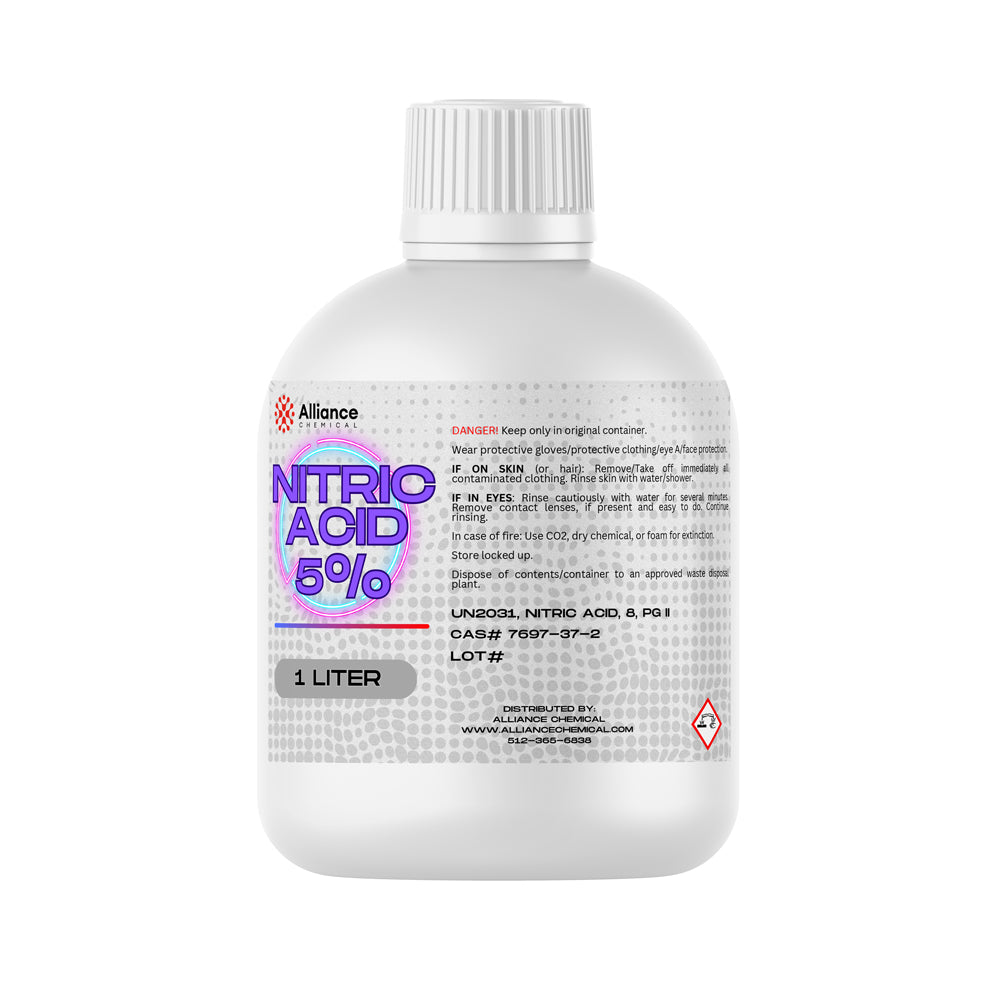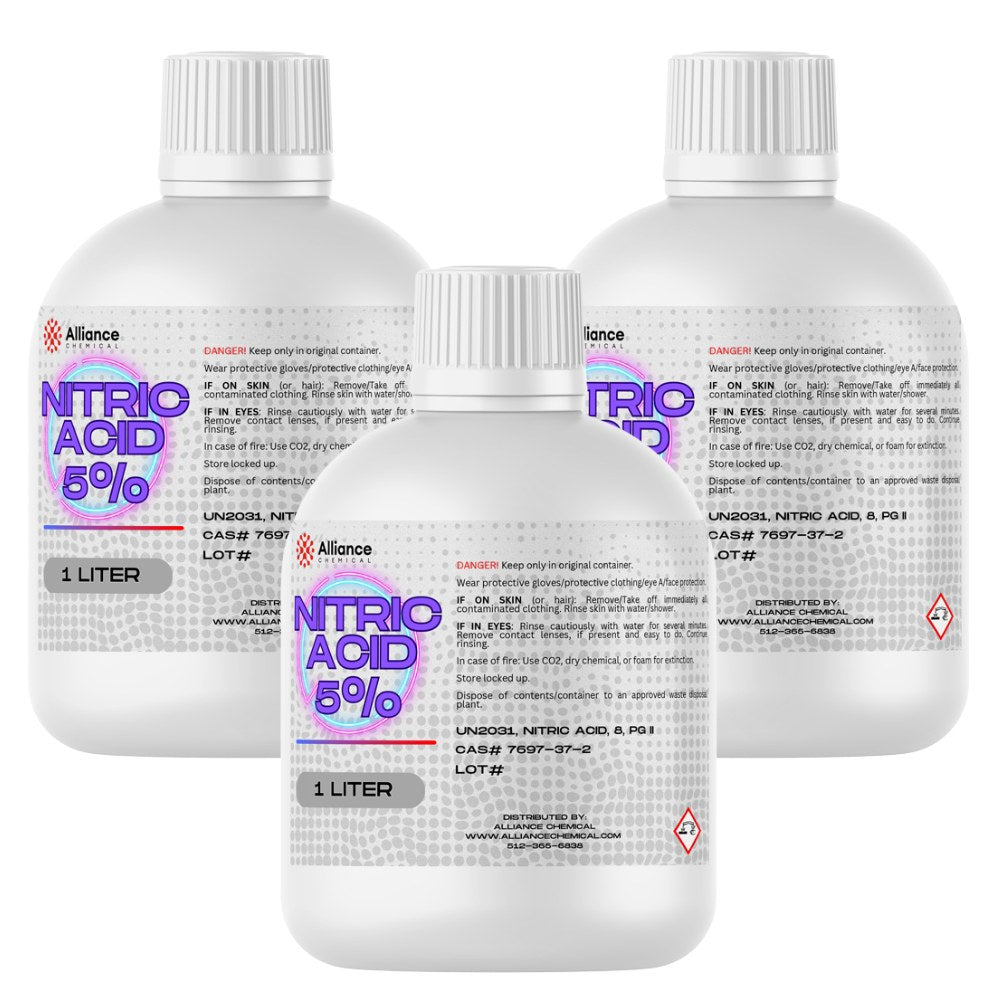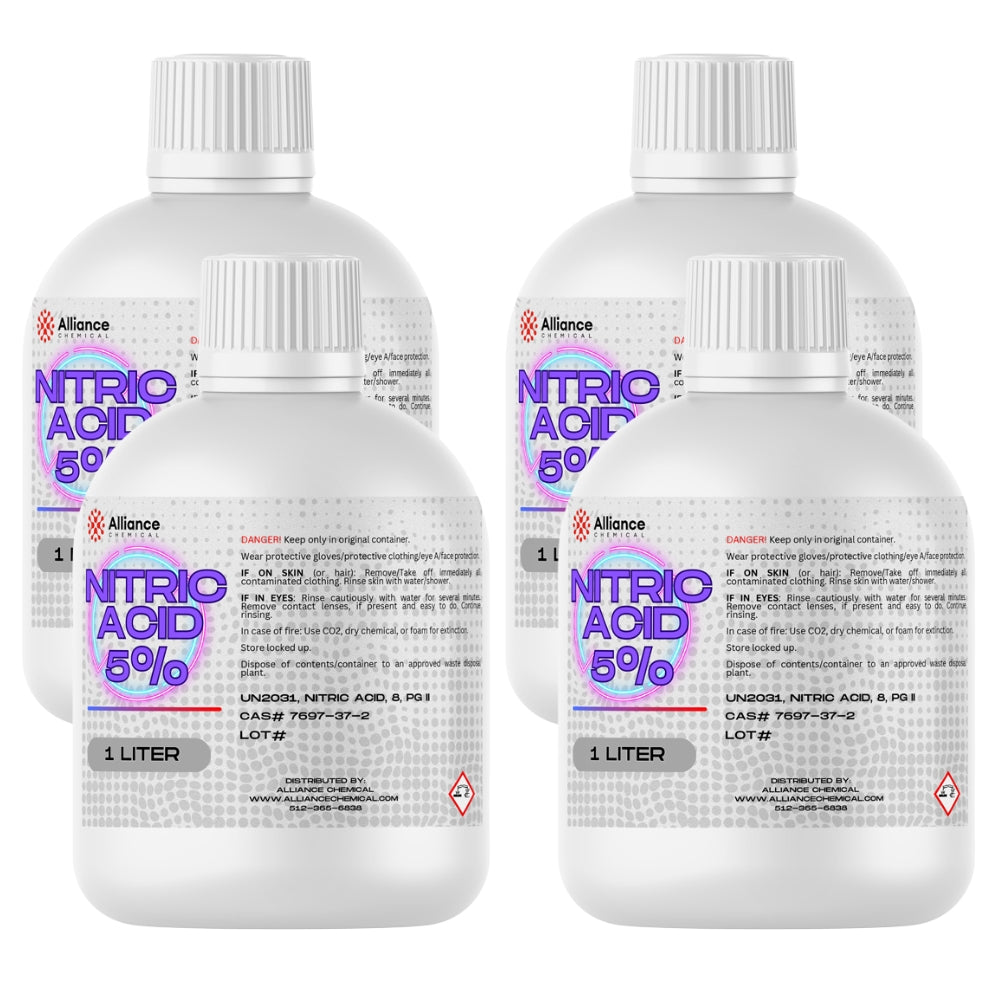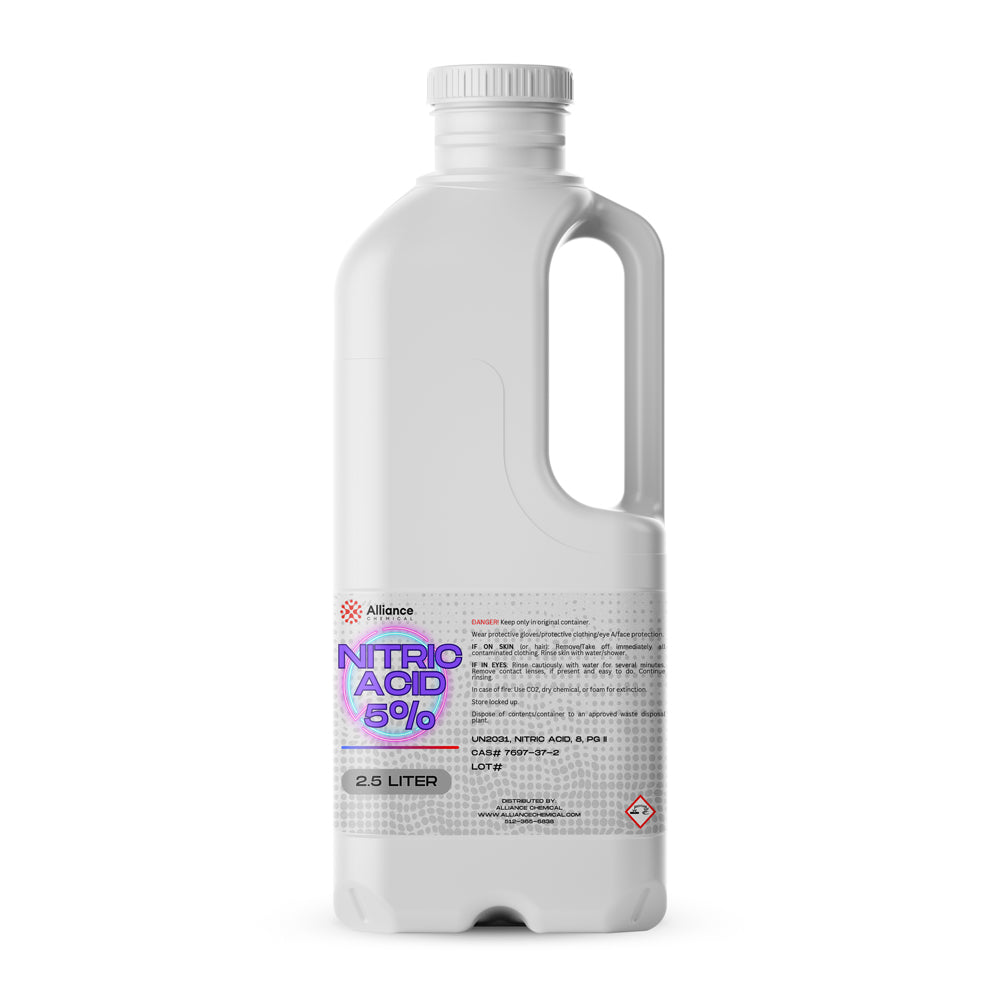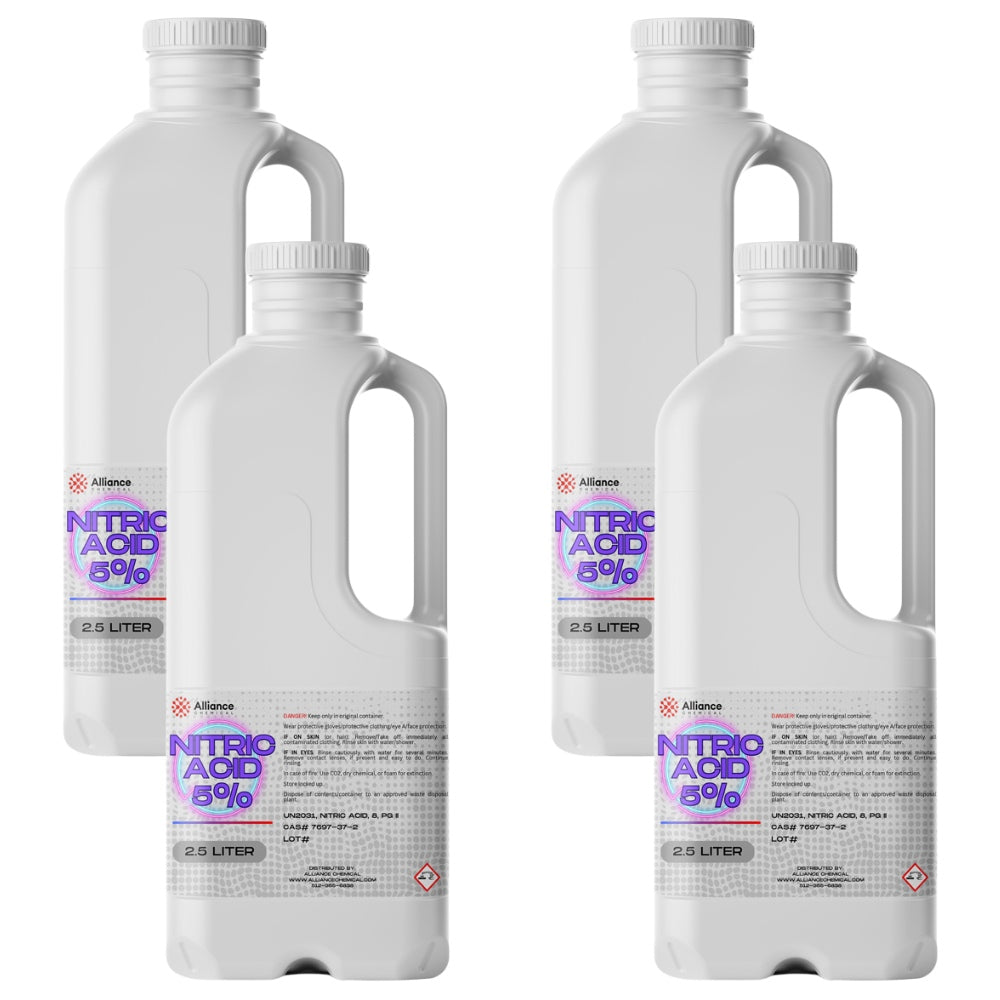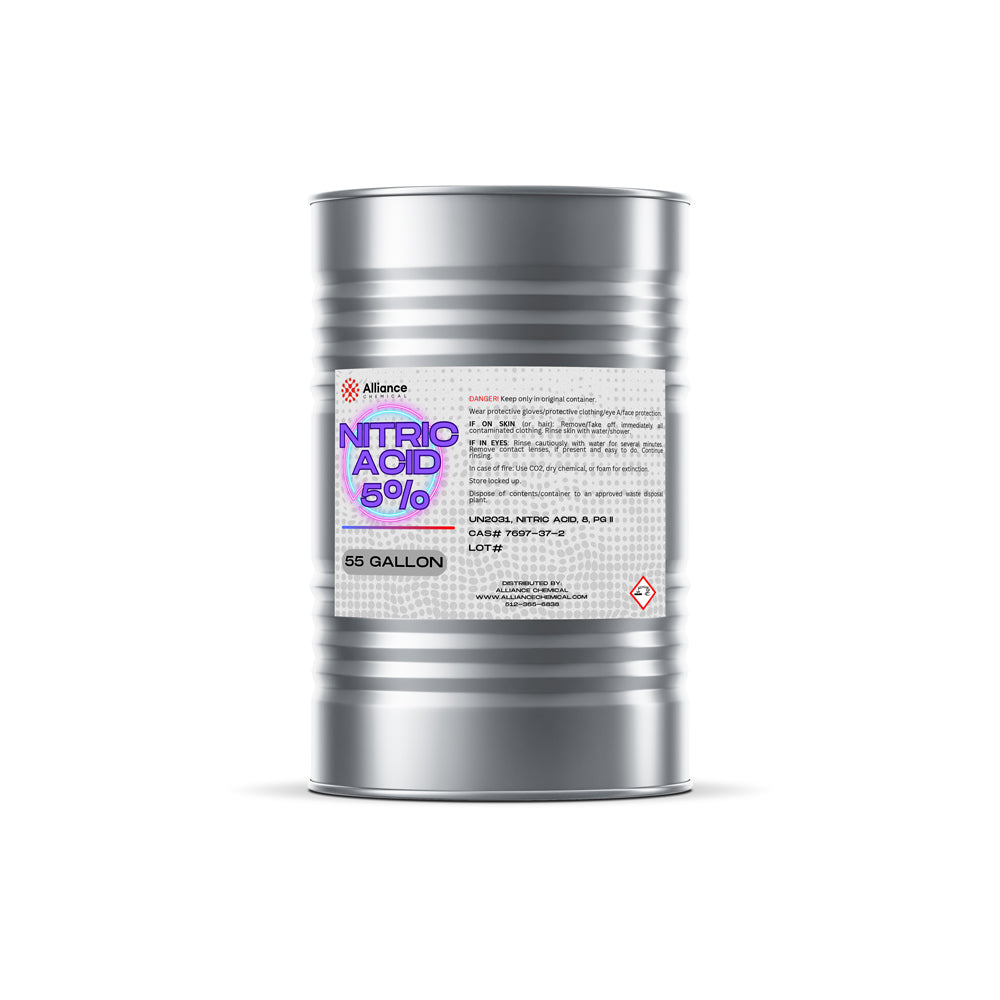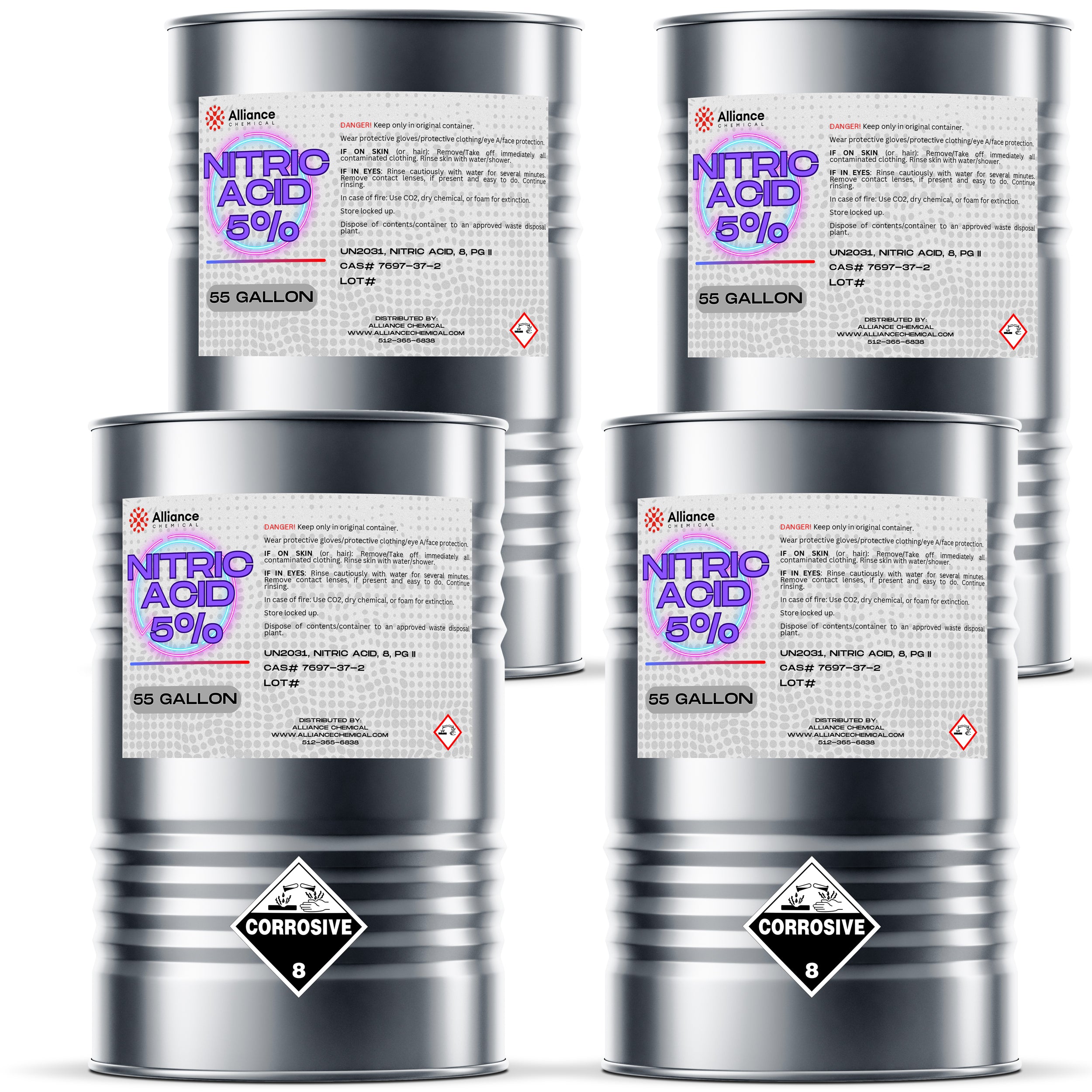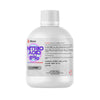Ask a question
Product Overview
Nitric Acid 5% is a dilute aqueous solution of nitric acid (HNO₃), specifically formulated for safe handling while delivering controlled oxidizing strength. The solution presents as a clear, colorless liquid with a pungent, acrid odor and a density near 1.005 g/mL at 25°C, suitable for applications requiring reduced acidity relative to concentrated nitric acid. The product maintains a bright chemical profile with complete water miscibility, ensuring predictable dilution behavior and compatibility with standard laboratory glassware and reaction media. Typical assay values are centered around 5% w/w HNO₃, with a narrow specification window (4.8–5.2%), verified by titration with standardized NaOH per established methods. This grade is aligned with ACS Reagent Grade and USP-NF Monograph expectations, supporting reliable performance in analytical, preparative, and manufacturing contexts. The formulation emphasizes low trace metal content and stringent impurity controls to minimize contamination in sensitive processes, while the specific gravity range and controlled storage conditions contribute to batch-to-batch consistency.
Key Properties
- Appearance: Clear, colorless liquid
- Chemical Formula: HNO₃
- Molecular Weight: 63.01 g/mol
- Boiling Point: 100°C
- Specific Gravity (20°C): 1.004–1.006 (typical 1.005)
- Assay (wt % HNO₃): 4.8–5.2 (typical 5.00)
- Color (APHA/Hazen): Max 10 (typical 5)
- Residue After Ignition: Max 0.02% (typical 0.01%)
- Chloride (Cl⁻, ppm): Max 30 (typical 15)
- Nitrate (NO₃⁻, ppm): Max 5,000 (typical 2,500)
- Ammonium (NH₄⁺, ppm): Max 1 (typical 0.5)
- Heavy Metals (as Pb, ppm): Max 0.5 (typical 0.1)
- Iron (Fe, ppm): Max 1 (typical 0.2)
- Sulfate (SO₄²⁻, ppm): Max 100 (typical 50)
- Chromium (Cr, ppm): Max 0.5 (typical 0.1)
- Zinc (Zn, ppm): Max 1 (typical 0.2)
Common Applications
- HPLC Mobile Phase: Used as a mobile phase component in analytical HPLC for separation of compounds requiring mild acidity and oxidizing capability, supporting reproducible peak shapes and detector compatibility.
- Acidic Etching Agent: Employed in metal and semiconductor etching to create controlled patterns while minimizing corrosivity relative to higher concentrations.
- pH Adjustment: Utilized to adjust pH in water treatment and process streams where precise acidity control is needed without introducing high chloride contamination.
- Reagent in Chemical Synthesis: Serves as a reagent in synthesis steps where dilute oxidizing conditions are advantageous or where scavenging of residual base is required.
- Oxidizing Agent in Laboratory Research: Acts as an oxidant in qualitative analyses and synthetic protocols that tolerate low concentration nitric acid.
- Quality Control and Standards Preparation: Provides standardized acidic media for calibration, titration, and standardization procedures in QA labs.
Safety Precautions
Handle this product in a well-ventilated area using appropriate PPE, including chemical-resistant gloves, splash goggles, and a lab coat. Store in a cool, dry place away from direct sunlight and incompatible materials (strong bases, reducing agents). Use containers made of HDPE or glass to minimize container interactions, and ensure container seals are intact to prevent vapor release and moisture uptake. Maintain proper ventilation and avoid inhalation of vapors; use fume hoods or local exhaust as appropriate.
Safety Precautions
First safety paragraph: In case of skin or eye contact, flush with copious water for at least 15 minutes and seek medical attention promptly. If inhaled, move to fresh air and seek medical care if irritation persists. If ingested, do not induce vomiting; rinse mouth and contact medical personnel immediately. Follow SDS-specific guidance (UN 2031, Nitric acid solution, Class 8, PG II) and prepare for potential severe corrosive injuries and respiratory irritation.
Benefits
✔ Low Impurity Profile – Maintains low levels of heavy metals and anions to minimize contamination in sensitive analytical and synthesis workflows.
✔ Controlled Acidity – Provides predictable, reproducible acidity for precise pH control and titration standards.
✔ ACS Reagent Grade compliant – Aligns with recognized industry standards for reliability in research and manufacturing.
✔ Storage Stability – Designed for stability with a 24-month shelf life under proper storage conditions.
| Property | Value |
|---|---|
| Molecular Weight | 63.01 g/mol |
| Formula | HNO3 |
| Assay | 5% |
| Grade | Reagent |
| Form | Liquid |
| Solubility | Soluble in water, alcohols, and most organic solvents |
| Appearance | Colorless, fuming liquid |
| Melting Point | -42 °C |
| Boiling Point | 83 °C |
| Specific Gravity | 1.03 |
| Industry | Industrial, Other |
9XJ-8ZC-GAQ
$19.98
Unit price
Compare Products
| Price |
|---|
| SKU |
| Rating |
| Discount |
| Vendor |
| Tags |
| Weight |
| Stock |
| Short Description |

